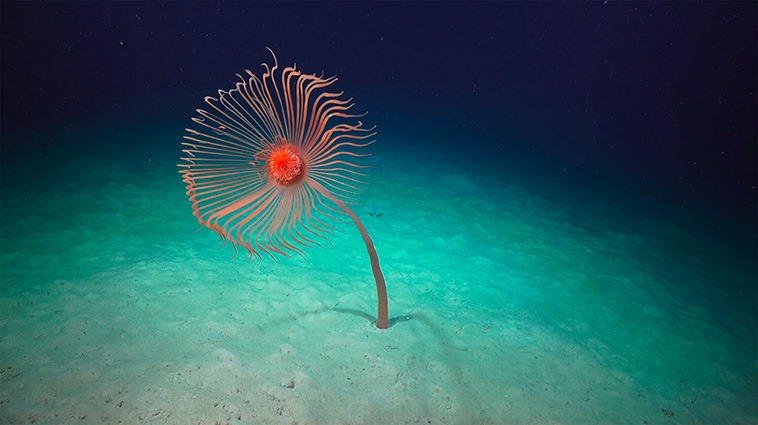ANIMALS
Meet The Akhal-teke, The Horse With A Shimmering Coat That Looks Like It Was Dipped In Liquid Gold
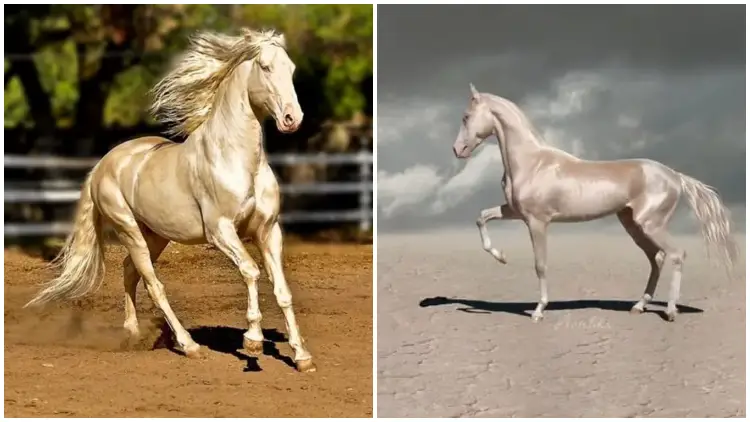
Excitedly spreading through the online world is the claim that he is the most remarkable horse in the world, supported by a photo of a breathtaking Akhal-Teke with a shimmering coat of gold. The praise on social media reached an unprecedented frenzy, culminating in the horse winning the title of the world’s most beautiful horse through a global vote in a contest that raised some doubts.
Even though the contest turned out to be fake, there’s no denying that the horse itself is authentic and truly an incredible sight. Horse Nation explains that the horse’s astonishing and almost magical glow is due to its unique hair structure, which has the ability to bend light.
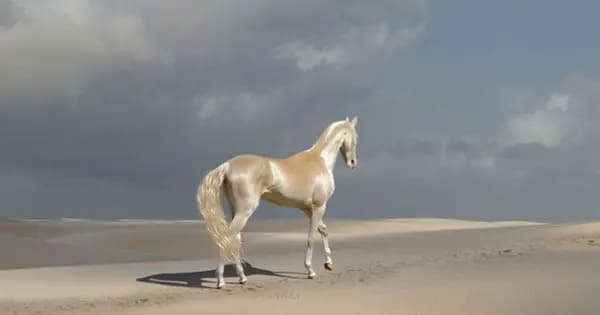 Image source: Facebook/Pascal Mouawad
Image source: Facebook/Pascal Mouawad
The story of this legendary horse begins with a passionate admirer’s post on social media, which spread rapidly and gained admiration from people all around the world. As a result, the notion arose that the horse had won a beauty contest, and not just any contest, but the highly coveted title of the world’s most beautiful horse. Although the breed has a long-standing lineage dating back to ancient times, it gained global recognition relatively recently, following Turkmenistan’s incorporation into Russia in the late 19th century.
 Image source: Facebook/Pascal Mouawad
Image source: Facebook/Pascal Mouawad
The stunning coat of this remarkable creature serves a purpose beyond aesthetics. Experts explain that its fur has a distinctive structure that enhances and reflects light, resulting in a striking radiance. It is believed that the Akhal-Teke is naturally born with this golden coat as a means of camouflage in desert environments, where its metallic shimmer can help it blend seamlessly with the sandy landscape and rocky terrain.
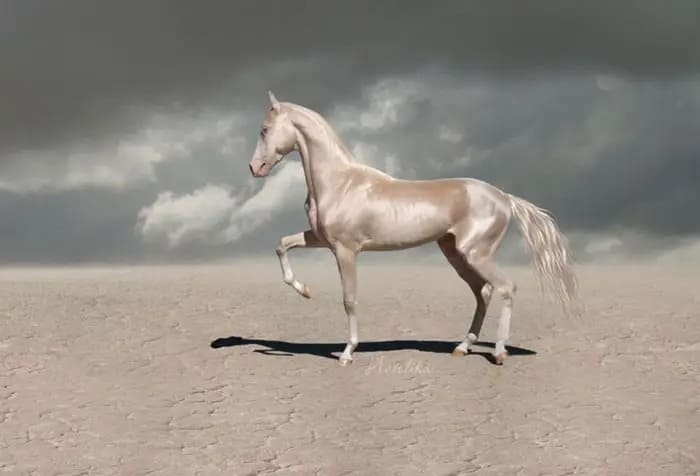 Image source: Burak CALISKAN
Image source: Burak CALISKAN
Encountering an Akhal-Teke horse, let alone owning one, is highly unlikely nowadays, as their global population is estimated to be only around 1,250. If the allure of a golden horse has captivated your imagination, there are other equally magnificent options available in the same hue. While horses come in a wide variety of stunning colors, owning a horse with a golden coat doesn’t have to be an impossible dream, although it’s worth noting that horse ownership can still be expensive.
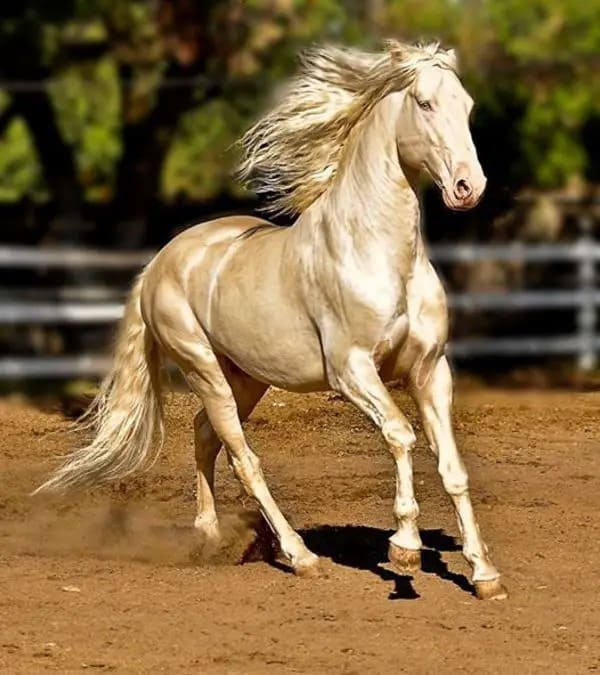 Image source: Facebook/Pascal Mouawad
Image source: Facebook/Pascal Mouawad
There is an undeniable sense of grandeur associated with a golden horse, possibly influenced by Queen Isabella of Spain, who once prohibited commoners from owning them, solidifying their connection with royalty. Alternatively, this fascination might originate from fairy tales depicting princesses surrounded by gold or heroes riding majestic white horses. A simpler explanation could be the appeal of projecting affluence, influence, and prestige by associating oneself with the color gold.
Watch the Video here:
According to a popular tale, Queen Isabella of Spain held a deep affection for golden horses and is said to have possessed an astounding collection of 100 of them. In the early 1500s, she made a significant move by sending a prized palomino stallion and five mares to Mexico, with the aim of introducing the beauty of golden horses to the New World. This endeavor turned out to be fruitful, as palominos have since gained immense popularity in America, celebrated for their adaptability in various equestrian pursuits.
The Palomino Horse Association acknowledges the widespread appeal of palomino horses, highlighting their involvement in a wide range of activities. According to their website, these versatile horses are utilized in various domains such as ranching, racing, rodeos, leisure riding, parades, shows, fiestas, jumping, trail rides, and more.
The days of Queen Isabella’s prohibition on commoners owning golden horses are long gone. If she were alive today, she might be surprised to learn that these once-exclusive animals are now readily available to a broader group of enthusiasts.
ANIMALS
Amazing Video of Unseen Ocean Creatures in the Ningaloo Canyons
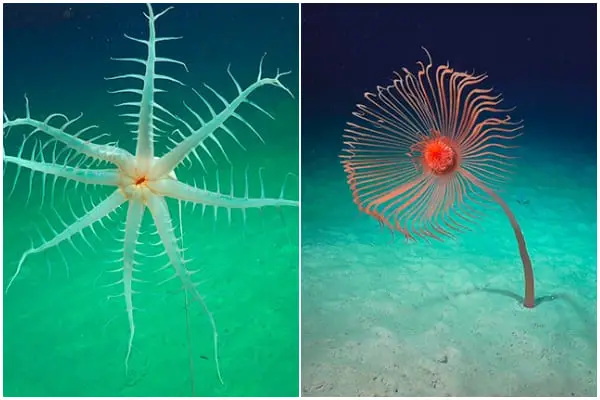
The Schmidt Ocean Institute recently explored the Ningaloo Canyons on the western coast of Australia using a robotic underwater vehicle called the ROV Sebastian. Check out the amazing video of what they discovered in the deep parts of the Indian Ocean.
More info: Youtube




ANIMALS
These Pics Are Art and the Artists Are Insects
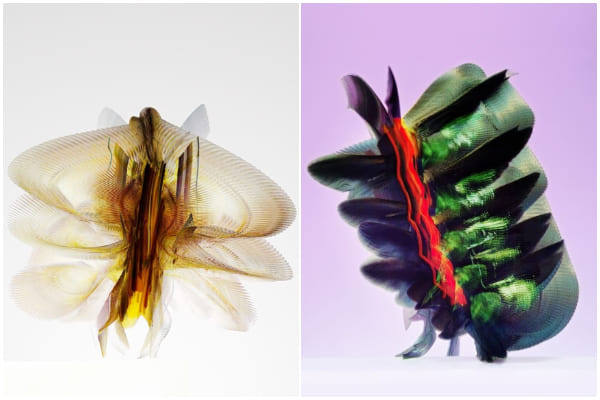
Flying insects move so quickly that they are hard to follow, but new technology and some smart ideas have helped Spanish photographer Xavi Bou do just that. After spending 10 years focusing on birds in flight for his Ornithographies project, he turned his attention to insects.
For Entomographies, he uses high-speed video footage taken by Adrian Smith, an insect expert at North Carolina State University, to study and record how insects move. Bou then picks multiple frames and combines them into single images that show the fast movements of one or more insects through space and time.
With Smith’s help, Bou has captured the aerial tricks of wasps, the jumps of leafhoppers, and the fluttering of butterflies in amazing detail. He hopes that by doing this, he can make people more aware of the decline in important insect populations around the world.
1. Zebra longwing
This butterfly, which is common in many areas of the Americas, really fits its name. It can fly very high with just a few flaps of its large wings.
 Image source: nationalgeographic
Image source: nationalgeographic
2. Two-lined spittlebug
This insect, which comes from the eastern United States, is often seen as a pest because it likes to eat grass. Its springy back legs can make it jump into the air like a rocket.
 Image source: nationalgeographic
Image source: nationalgeographic
3. Yellow-collared scape moth
Unlike most moths, this North American species flies during the day. Its shiny blue-black wings sparkle in the sunlight.
 Image source: nationalgeographic
Image source: nationalgeographic
4. Ailanthus webworm moths
These tropical moths have spread farther north in the U.S. Because of their larval host, the invasive tree of heaven, they are now one of the most common backyard moths in the country.
 Image source: nationalgeographic
Image source: nationalgeographic
5. Common stonefly
Mostly found in eastern North America, this insect starts its life as an underwater nymph in forested streams or rivers. Then it leaves the water, sheds its skin, and becomes an adult with wings.
 Image source: nationalgeographic
Image source: nationalgeographic
6. Green lacewings
Eighty-seven species of this insect have been found in the U.S. and Canada. Since they eat a lot of unwanted plant pests like aphids and mites, they are often used to naturally control these pests.
 Image source: nationalgeographic
Image source: nationalgeographic
7. Grapevine beetle
This insect, fittingly named, eats the leaves and fruit of grapevines, both wild and farmed, but it doesn’t do much damage to the plants. As a type of scarab beetle, it often flies in a curved path.
 Image source: nationalgeographic
Image source: nationalgeographic
8. Oak treehopper and green treehopper
Treehoppers are known for their uniquely shaped pronotum, the part behind their head, which often looks like plant parts to hide from predators. They can jump well thanks to special muscles.
 Image source: nationalgeographic
Image source: nationalgeographic
9. Banded orange
This brightly colored butterfly can be found from Mexico to Brazil. Before mating season, male butterflies look for mineral salts, sometimes even drinking salty fluids from the skin, eyes, and nostrils of other animals.
 Image source: nationalgeographic
Image source: nationalgeographic
10. Sapho longwing
Longwings can live for 6 to 7 months, longer than most butterflies. This type, found from Mexico to Ecuador, has shiny blue wings, which is why it’s also called the Sapphire longwing.
 Image source: nationalgeographic
Image source: nationalgeographic
ANIMALS
Eagle and Fox in an Epic Midair Battle Over a Rabbit, Were Captured by a Photographer

Wildlife photography often depends on the perfect combination of good timing and the right place.
That’s exactly what happened when Kevin Ebi, an experienced wildlife photographer, captured an incredible battle between a bald eagle and a red fox, both competing for a rabbit meal.
In a detailed blog post, Ebi shares the fascinating series of events that unfolded while he was photographing foxes in San Juan Island National Historical Park, located in Washington state.
Ebi noticed a lively group of eight fox kits as they began their hunting lessons. Suddenly, they spotted a rabbit, and a thrilling chase ensued. Eventually, one of the foxes emerged as the winner, proudly carrying the rabbit across the field.
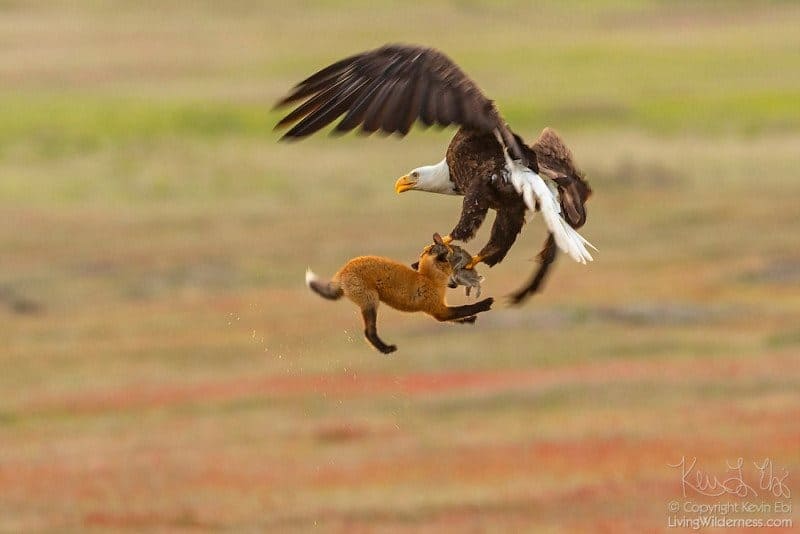 Image source: Kevin Ebi
Image source: Kevin Ebi
Ebi shares what happened at that moment: “As I followed the fox with my camera, a sudden bald eagle cry caught my attention. It was swiftly approaching, clearly aiming for the rabbit. I quickly focused on the fox, anticipating a quick turnover of events.”
To Ebi’s astonishment, instead of a quick surrender, the situation turned into a intense fight in the air.
The eagle used its power to lift the fox and rabbit high up in the sky. Even while airborne, the fox attempted to break free by swinging back and forth.
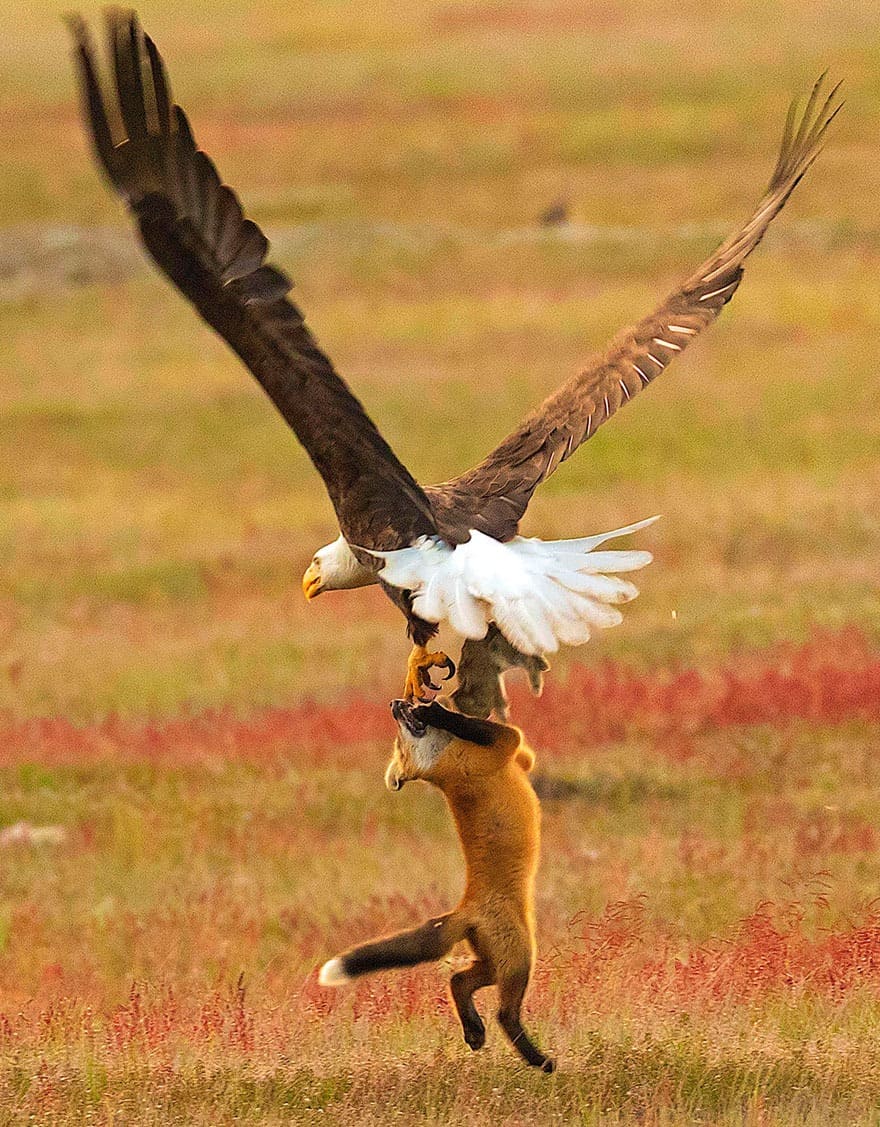 Image source: Kevin Ebi
Image source: Kevin Ebi
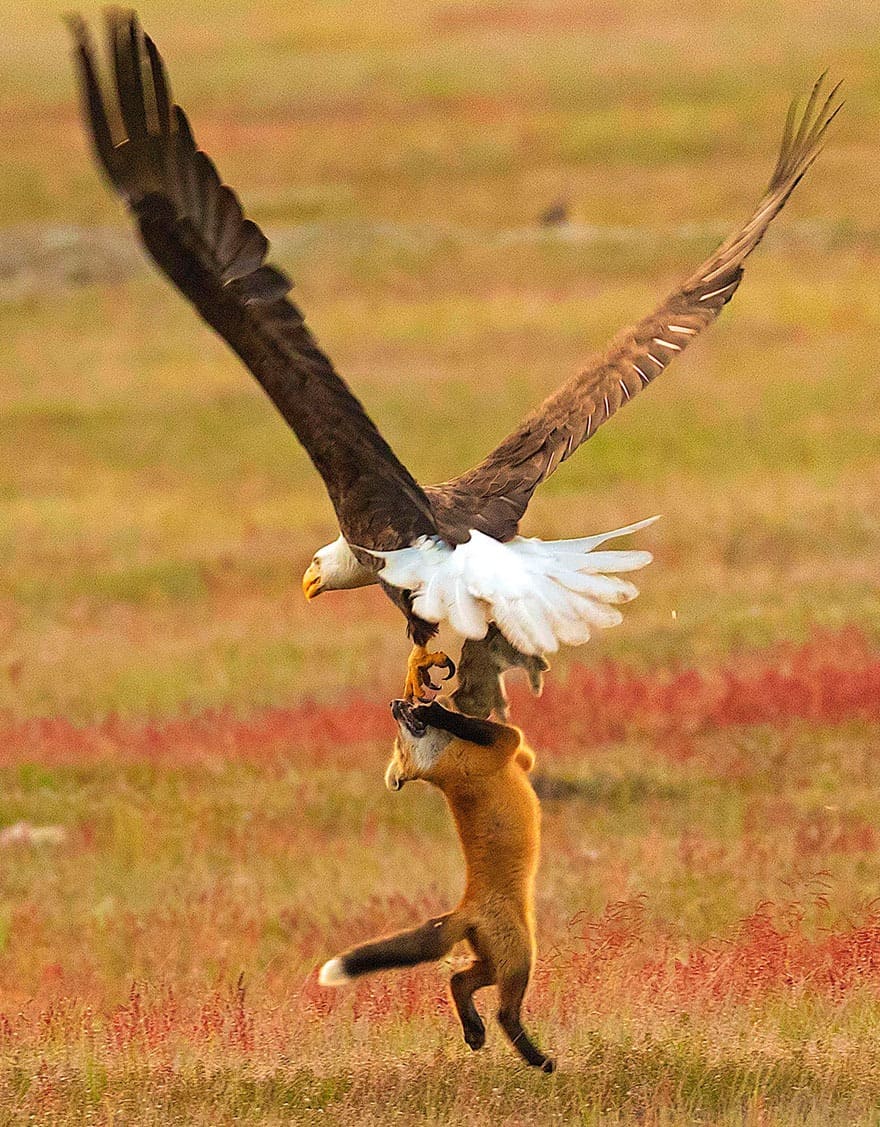 Image source: Kevin Ebi
Image source: Kevin Ebi
 Image source: Kevin Ebi
Image source: Kevin Ebi
In the end, the eagle moved the rabbit to its other claw, causing the fox to let go. The intense battle came to an end in less than 10 seconds.
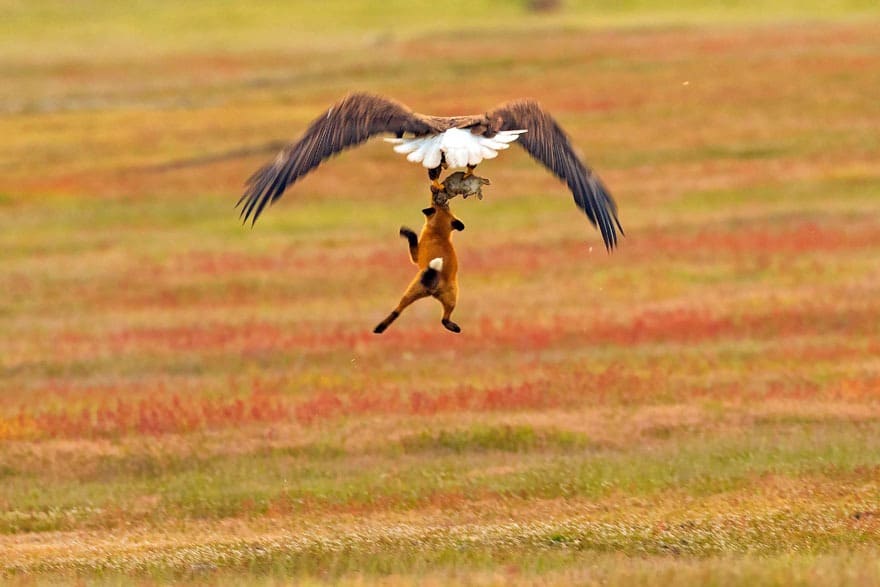 Image source: Kevin Ebi
Image source: Kevin Ebi
For those worried about the fox’s well-being after the fight, Ebi reassures that it was not injured. The fox swiftly bounced back from the encounter and resumed its playful behavior with the other young foxes, showing no visible wounds from the aerial clash.
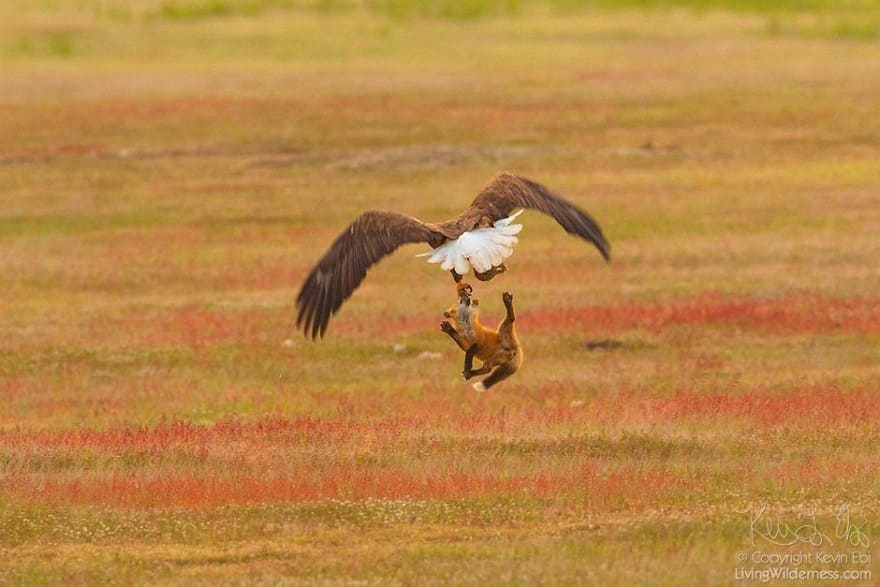 Image source: Kevin Ebi
Image source: Kevin Ebi
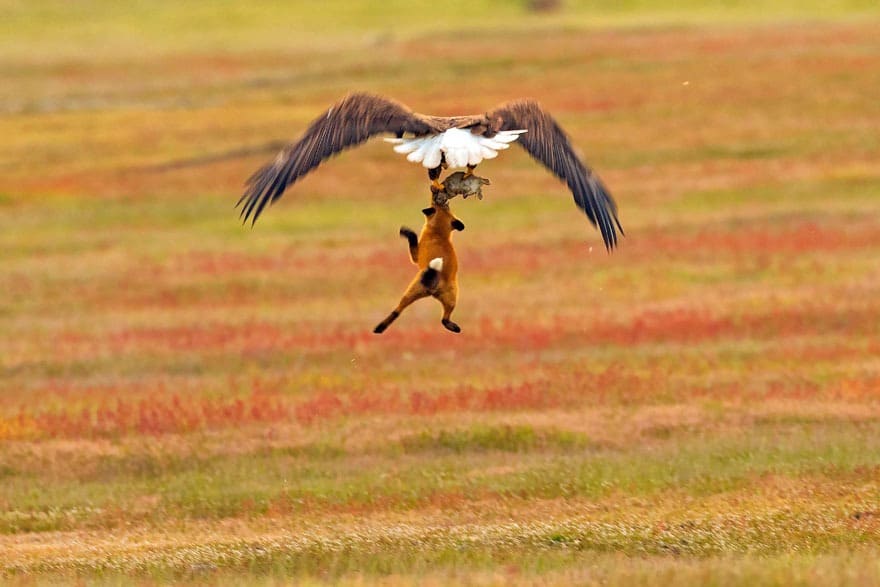 Image source: Kevin Ebi
Image source: Kevin Ebi
 Image source: Kevin Ebi
Image source: Kevin Ebi
 Image source: Kevin Ebi
Image source: Kevin Ebi
-

 GARDEN10 tháng ago
GARDEN10 tháng ago4 Easiest Ways to Get Free Plants
-

 ANIMALS10 tháng ago
ANIMALS10 tháng agoBritish Angler Caught Huge 67-Pound Goldfish in the World
-

 FUNNY10 tháng ago
FUNNY10 tháng ago30 Funny and Perplexing Photos That Make You Laugh All Day
-

 GARDEN9 tháng ago
GARDEN9 tháng ago30 Shimmering Side Yard Landscape Ideas
-

 FUNNY10 tháng ago
FUNNY10 tháng ago30 Weirdest Things That People Came Across On The Subway
-

 DIY & CRAFT10 tháng ago
DIY & CRAFT10 tháng ago19 Easy and Creative DIY Ideas to Enhance Front Yard
-

 ANIMALS10 tháng ago
ANIMALS10 tháng agoKindhearted Driver Rescues Skinny Dog Hiding Near Highway Thanks to His Eagle Eye
-

 FUNNY10 tháng ago
FUNNY10 tháng ago22 Design Fails That Will Make You Laugh Out Loud

